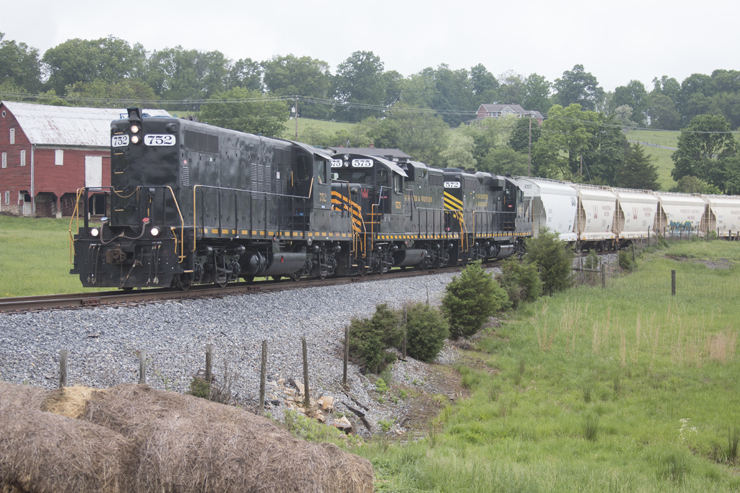
MARTINSBURG, W.Va. — The Winchester & Western Railroad has signed an agreement to serve a new Commercial Metals Co. steel mill in West Virginia, OmniTRAX, the railroad’s parent company, has announced.
OmniTRAX says CMC, the largest manufacture rof steel reinforcing bar in North America and central Europe, selected the Falling Waters, W.Va., site after a multistate site review, determining the location on the 106-year-old W&W rail line provides expansive market access.
“The new CMC mill exemplifies the power of pairing rail and real estate together,” OmniTRAX CEO Dean Piacente said in a press release. “By combining the efficiency of rail transportation with a strategic location that can efficiently reach two-thirds of the nation’s population, this new mill is a model of supply chain optimization.”
The mill project was a collaborative effort of OmniTRAX, state, and Berkeley County officials, OmniTRAX said, with the railroad supplementing state and county incentives with a custom rail service agreement and additional infrastructure investments. The new mill is projected to generate more than 200 jobs while reducing traffic congestion by placing a signficiant amount of carload traffic on the railroad. The facility is projected to open in late 2025.













Pretty sure steel will still need to be made with blast furnaces in many cases. Not all can be from smelted scrap.
“Pretty sure steel will still need to be made with blast furnaces in many cases. Not all can be from smelted scrap.”
Too bad but that’s not true anymore. With direct-reduced iron and HBI and other inputs, along with LMF refining, electric furnaces can make any type of steel these days. Usually for less cost and definitely more environmentally friendly. That’s a big part of why the US has gone from 237 blast furnaces in 1965 to only 15 today (and only 12 currently operating). In the not too distant future none will exist here. I’m guessing the UK and US will be the first industrialized nations to operate without any blast furnaces, followed by Canada, who is offering big-time incentives to help steelmakers there to convert BFs into EAFs. Algoma and AM have already committed to getting rid of their BFs in the next few years, which would only leave 1 left (Stelco at Lake Erie Steel). This one won’t last either. Some folks see sad decline in all this while others see progress. Either way, blast furnaces are heading the way of the dodo in several countries…
JG
“By combining the efficiency of rail transportation with a strategic location that can efficiently reach two-thirds of the nation’s population.”
I guess they are not counting on UP to be efficient
No blast furnace, those things are on the way out. Not even a mini-mill but a micro-mill, a rather small EAF facility (500k t/p/y) that will not generate much rail activity compared to most steel mills. Some scrap loads in and most output by truck. That’s why the statement that this project will reduce traffic congestion is such a moronic claim. You don’t reduce congestion by adding a lot more congestion. Overall, sorta good news I guess…
JG
I assume that this facility will be an electric arc mill, not a blast furnace. Am I correct?
EAF mini mill, essentially a recycling plant.
Product will be rebar and wire.
Thx
Great news!